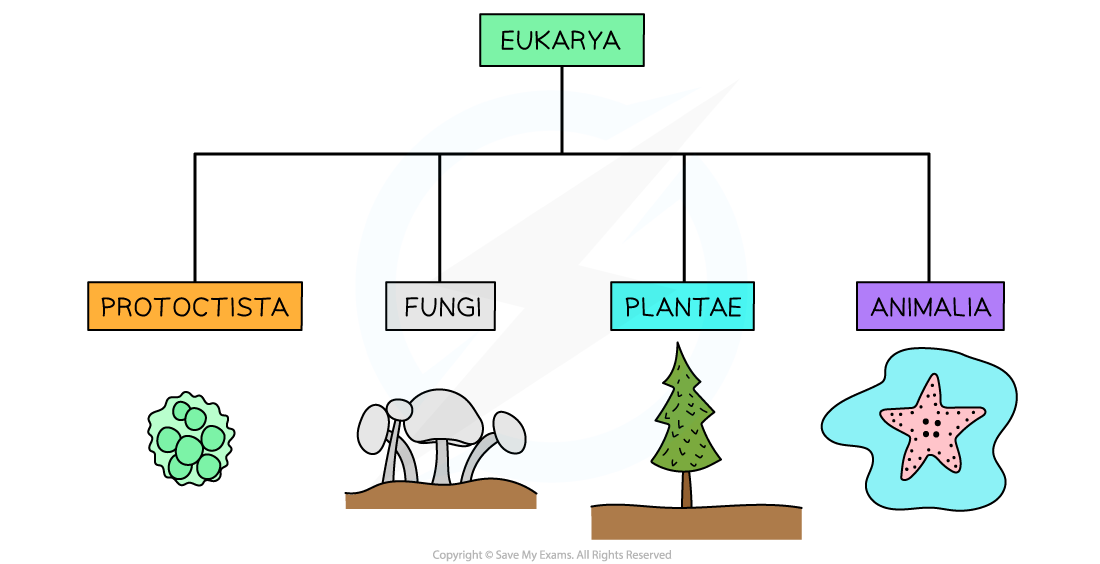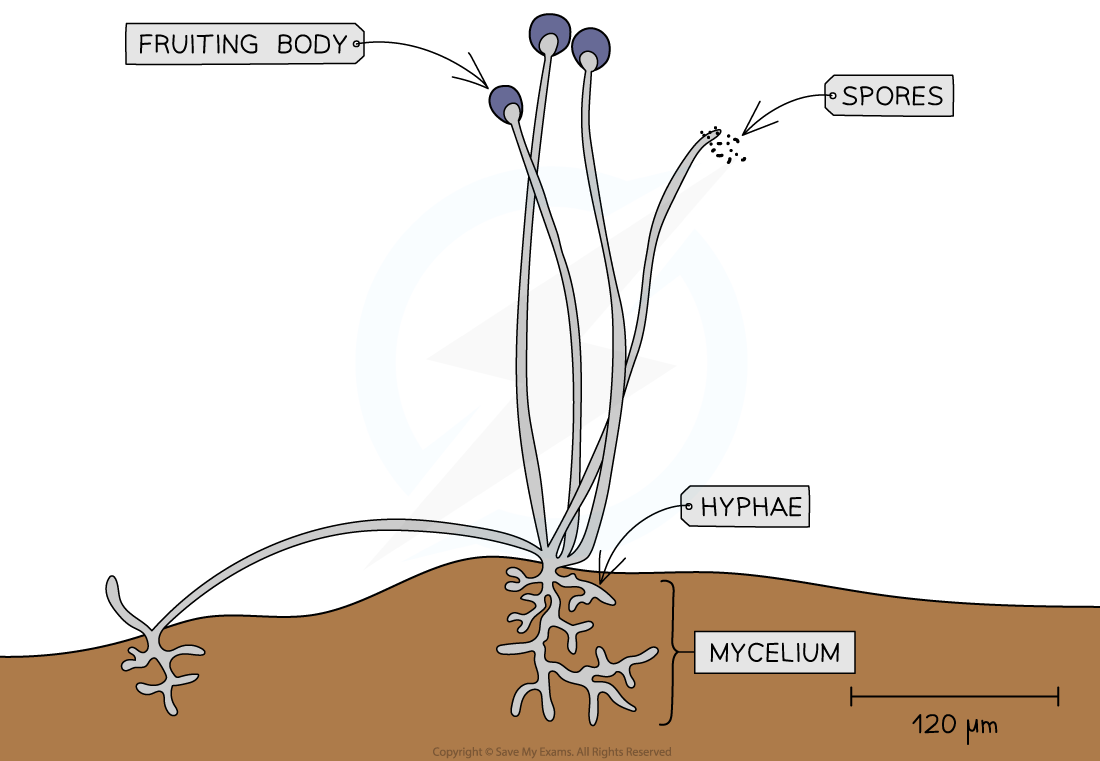- 翰林提供学术活动、国际课程、科研项目一站式留学背景提升服务!
- 400 888 0080
CIE A Level Biology复习笔记18.1.4 Kingdoms
Kingdoms
- The domain Eukarya can be divided into 4 kingdoms:
- Protoctista
- Fungi
- Plantae
- Animalia
- Organisms from each of the four kingdoms have distinct characteristics and features, but share similarities in that they have cells with membrane-bound nuclei separating genetic material from the cytoplasm, and compartmentalisation within their cells as a result of the presence of other organelles

The four kingdoms within the Eukarya domain: protoctista, fungi, plantae and animalia
Kingdom Protoctista
- All Protoctista are eukaryotic, and this broad group of cellular life encompasses all eukaryotic cells that do not belong to the other three eukaryotic kingdoms
- Members of this kingdom show great diversity in all aspects of life including structure, life cycle, feeding and trophic levels and well as modes of locomotion
- Protoctists can exist as single-celled organisms or as a group of similar cells
- A group of Protoctista known as protozoa possess cells similar to animal cells
- Their cells have no cell wall
- Another group of Protoctista known as algae possess cells similar to plant cells
- Their cells have cellulose cell walls and chloroplasts
- Stentor roseli is a protoctist that has flagella all over its body which help it feed and move
Kingdom Fungi
- The oldest organism in the world is thought to be a fungus aged somewhere between 1500 - 10,000 years old
- All fungi are eukaryotic cells
- The cells of fungi:
- Possess non-cellulose cell walls (often made of the polysaccharides chitin and glucans
- Don’t have cilia
- Fungi are heterotrophs:
- They use organic compounds made by other organisms as their source of energy and molecules for metabolism
- They obtain this energy and carbon by digesting dead/decaying matter extracellularly or from being parasites on living organisms
- Fungi reproduce using spores that disperse onto the ground nearby
- Fungi have a simple body form:
- They can be unicellular (like the common baker’s yeast Saccharomyces cerevisiae
- Some consist of long threads called hyphae that grow from the main fungus body (mycelium)
- Larger fungi possess fruiting bodies that release large numbers of spores
- The mould found on bread is actually a fungus: bread mould fungus Rhizopus nigricans

The structure of a fungus with its hyphae, mycelium and fruiting bodies
Kingdom Plantae
- Plants are multicellular eukaryotic organisms
- Plant cells:
- All have cell walls composed of cellulose
- Possess large (and usually permanent) vacuoles that provide structural support
- Are able to differentiate into specialized cells to form tissues and organs
- Possess chloroplasts that enable photosynthesis (not all plant cells have chloroplasts)
- Can sometimes have flagella
- They are autotrophs
- This means they can synthesize their organic compounds and molecules for energy use and building biomass from inorganic compounds
- Plants have complex body forms
- They have branching systems above and below the ground
- Bristlecone pines are found in the USA, it is estimated that some of them could be 3000 years old
Kingdom Animalia
- Animals are also multicellular eukaryotic organisms
- Animal cells:
- Are able to differentiate into many different specialised cell types that can form tissues and organs
- Have small temporary vacuoles (for example, lysosomes)
- Have no cell walls
- Sometimes have cilia
- They are heterotrophs
- They have a wide range of feeding mechanisms
- They have a wide range of body forms:
- Communication within their complex body forms takes place through a nervous system and chemical signalling
- Blue whales are the largest living animal species
转载自savemyexams

早鸟钜惠!翰林2025暑期班课上线

最新发布
© 2025. All Rights Reserved. 沪ICP备2023009024号-1








